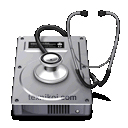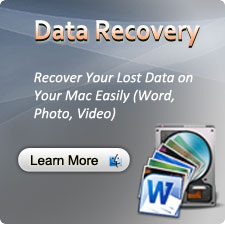How to Recover Lost Data from Corrupted Drive
Question:
“My college daughter's 120GB hard drive recently stopped working. She didn't hear any noise--it just stopped working.
I put another hard drive in the machine and set it up with OS and applications, and then put her old drive in as a slave and tried to look at it, but a message comes up that says it's unreadable. Other attempts say the hard drive is corrupt.
I have tried a few free programs such as pci_filerecovery.exe and the drive doesn't even show up. And the pci_us_smartrecovery.exe for photos, but most of the BMPs and JPEGs recovered aren't viewable and they both run so slowly that I was only at 10 percent after three full days of running.
She's a college student and can't afford hefty professional recovery labs. Is there any good, reasonably priced software or process that will reliably recover Word documents and photos? Please help.”
--Submitted by Hanks

We may always see this kind of questions show up on the Q & A forum, many people will answer you the question but how to make sure the answers can help you a lot? Today we will show you the right steps to recover lost data and offer you the ways to recover data from a corrupt Mac hard drive.
Steps and Ways for You
●Step One: Assemble Your Tools and Examine the Drive's Condition
The first thing to do is make sure you have the tools required to connect this drive to another computer safely. Ideally, you'll have some kind of SATA/IDE to USB cable or USB drive enclosure or sled that you can mount the drive into and connect it to your computer easily. Sure, if you have a desktop and like getting your hands dirty you can try to install the drive as an internal one, but an external connection is faster and easier.
Next, take a look at the drive itself. Is it damaged in any way? Are the pins bent or broken? Make sure that the drive is in good enough condition to actually use before you try anything in the first place that may damage it even further. If the drive is too physically damaged to attempt recovery, you may need more drastic measures that we'll get to later. If everything looks good and you have the equipment required to connect the drive to your system, we can proceed.
●Step Two: Grab Some Data Recovery Software and Connect the Drive
Before you do much else, make sure your antivirus and antimalware tools are up to date. You don't know what you'll find on this drive, and you don't want it to start misbehaving once the drive is connected to an active system. Once you've done that, it's time to download and install some data recovery tools. Here is one we love: uFlysoft Data Recovery. (Get more information here.)
●Step Three: Only one thing you need to do after perform lost data recovery: build a backup of your recovered data as soon as possible to avoid data loss happens again.
Kindly Remind
Remember this, don’t save the recovered data on the path which your lost files were store before or you may lose the files again.
